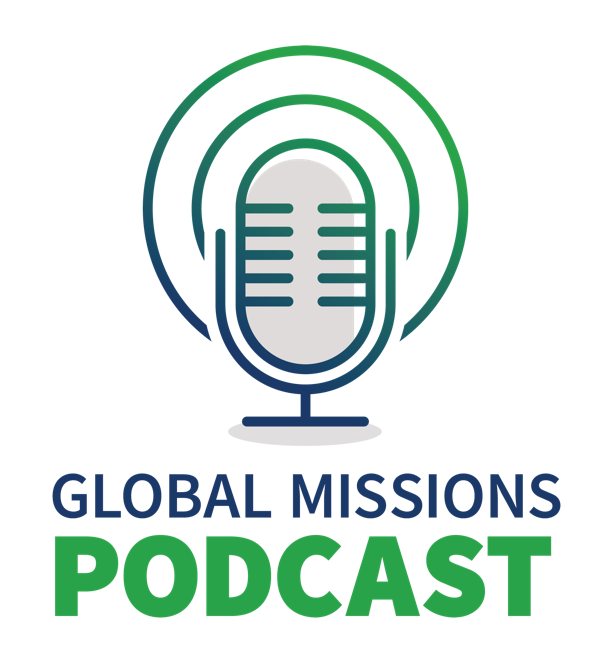
030: How to Help Without Hurting – Encore Episode
Jul 12, 2016
Brian Fikkert, co-author of bestselling book, When Helping Hurts: How to Alleviate Poverty without Hurting the Poor and Yourself, discusses with us how the church should define poverty and how it can address poverty in ways that bring dignity and help people understand that they are God's image bearers.
Podcast: Download
Brian Fikkert is the co-author of the best selling book, When Helping Hurts: How to Alleviate Poverty without Hurting the Poor and Yourself. He is the founder and President of the Chalmers Centre at Covenant College where he is also a professor of Economics and Development.
This is an Encore Episode – one of our most downloaded from Season 1. Season 2 will begin on September 6, 2016.
How did you become passionate about poverty alleviation?
- I felt called to work among the poor from a very young age. I think partly because of the family I was raised in – I was a pastor’s kid. But also God brought a book into my life by Ron Sider called Rich Christians in an Age of Hunger: Moving from Affluence to Generosity. I realized that Jesus had a profound concern for the poor, and so as his followers, we should also have a profound concern for the poor.
- It’s been a lifelong journey of discovering how I can use my gifts and my abilities to alleviate poverty.
Can you give us a brief explanation of your book, When Helping Hurts?
- The Chalmers Center is designed to help the church serve the poor well.
- We started the Chalmers Center 17 years ago. Through the Center, I met people who worked with Food for the Hungry and together we asked “What is poverty?” and “How can the church address poverty?”
- The main idea is that good intentions are not enough. It is possible to hurt the poor in the very process of trying to help them.
- We are often mimicking the mistakes of the secular world in how we help the poor.
- Our book is about best practices and principles for how to serve the poor in ways that bring dignity.
Featured Resource:
Resources are provided as recommendations only.
Show Links:
The main idea is that good intentions are not enough. It is possible to hurt the poor in the very process of trying to help them.
How do you define poverty?
- This is the most important question. The way we diagnose the problem affects how we react to the problem.
- We are often tempted to treat symptoms rather than the underlying causes and this can do damage. We’ve got to diagnose the causes of their poverty correctly.
- If you ask North Americans, “What is poverty?”, their answer will be the lack of material resources. We tend to think of life in material terms and so our solutions to helping the poor is often supplying material resources. This alone is not going to address the root causes of poverty.
- We believe that we need to root our understanding of poverty in the Biblical narrative. It starts with creation, goes to the fall and then onto redemption. We ask, “What is a human being?” As humans we are image bearers, and so we need to restore people’s understanding of their image.
- As image bearers, we are wired for relationship. We need to live in right relationship with God, with ourselves, with other and with the rest of creation.
- The fall has distorted all four of these relationships for each human beings. Its out of the brokenness of these four key relationships that people experience material poverty. But material poverty is just a symptom of the underlying brokenness. Instead we need to treat the deeper issues – the broken relationships between God, self, others and the rest of creation.
How does poverty fit together with the mandate of the church?
- We believe that the church ought to be profoundly concerned with those living in poverty.
- God’s message is a message of comprehensive renewal and shalom. Jesus’ message is that he is ushering in the day where there is no sickness, or pain or suffering.
- Jesus did deeds of mercy and compassion – he is all about declaring his Kingdom in words and deeds and he calls us to do the same as a part of his body.
- The message of our book is not do less, it’s do more – just do it well!
- The Bible teaches that Jesus works in and through the local church. The same power that raised Jesus from the dead is at work in us and so we have, working in us, the power of the Holy Spirit and so we are His hands and his feet. When people encounter the local church, they should encounter Jesus Himself. Jesus has ordained in the local church the ministry of the Word and the ministry of deeds of compassion and mercy. Jesus wants the church to continue His mission.
- We have been ennobled to be His representatives.
When people encounter the local church, they should encounter Jesus Himself.
Could you illustrate for us some of the ways we have not been helping the poor?
- Most evangelical Christians are not fans of the governments’ welfare programs. They say these programs create disincentives for people to work. Our government’s efforts to help the poor undermine the poor and create crippling dependencies in the poor. Their approach is to address materialistic poverty.
- But I see the church mimicking the government. We have soup kitchens and clothes closets that are handing out resources. We have STMs that hand out used clothes and shoes.
- All of this is reflective of a material understanding of poverty and what a human being is. If we move to a more relational understanding, it will change how we address poverty.
If we move to a more relational understanding of poverty, it will change how we address poverty.
Give us some ideas of a healthier way to address poverty.
- The most foundational principle is that if poverty is rooted in broken relationships, then everyone of us are poor in that none of us are experiencing these relationships in the way that God intended.
- Both materially poor and the rest of us, we are all broken – it just bubbles up in different ways in our lives.
- One of the manifestations of brokenness in poor people around the world is the sense of shame, inferiority and the inability to make changes in their lives.
- This brokenness for those of us who are not materially poor, we have a sense of pride, a sense of superiority, that we’ve been more spiritual. When we with a sense of pride interact with those with a sense of shame, we confirm that sense in them and they come to believe that they need us to make changes. Their shame is enhanced and our pride is enhanced and both parties are worse off than before.
- The primary prerequisite with working with the poor is repentance – our repentance of our pride, our materialism, our sense that we are uniquely anointed to solve the problems of the poor. We need to adopt a gospel posture – that we were once an enemy of the cross.
- When you mix pride with a material understanding of poverty, the two feed off of each other. It confirms that we are the solution to poverty for the poor because of my success and I have what they need. It puts me in a position of superiority and them in a position of inferiority.
- Working among the poor has helped me to better understand the Gospel. Working with the poor is central to the task of our churches, not icing on the cake.
The most foundational principle is tat if poverty is rooted in broken relationships, then everyone of us are poor in that none of us are experiencing these relationships in the way that God intended.
What are some of the principles you recommend?
- We draw out three key principles:
- One, you must distinguish between relief, rehabilitation and development.
- The underlying causes of poverty are very different.
- For example, the people in Nepal after the earthquake, they are lacking their material needs. Think also of someone living on the street in North America, who is also lacking in their material needs. But the causes of their needs are different.
- Relief is doing for people the things they cannot do themselves and it is an appropriate response during a crisis. But once the ‘bleeding has stopped’ we need to move into rehabilitation. The emphasis is on doing with the people, rather than doing for the people.
- The goal is restoration to image bearing.
- Development is walking with people in poverty to help them achieve greater levels of human flourishing. Most poor people around the world don’t need relief, they need development. They are in a chronic state of poverty. We need to ask them to use their gifts and abilities to take ownership of their own development.
- The primary problem that churches face in helping the poor is that we are helping by giving relief when development is what is needed.
- If you do relief when you should do development, you undermine dignity, human flourishing and the sustainability of the intervention.
- The second principle is using an asset-based approach rather than a needs-based approach. We often start with a needs assessment, trying to understand what is wrong with a person or a community. But this feeds the god complex on our part and the sense of inferiority that they feel.
- Instead we need to start by asking what is right – it asks what gifts and abilities and resourced do you have? How can you use them to accomplish your goals? How can we come alongside you to compliment your efforts?
- This is rooted in the Biblical narrative – the bible doesn’t start with the fall but rather with creation. We ask, “What goodness has God placed here and how has the fall distorted that? How can it be restored?”
- The key task in an asset-based approach is figuring out the gifts and abilities that already exist and then how can we mobilize those assets.
- This is a dramatic shift in how we approach things, but it is a powerful shift.
- The second edition of When Helping Hurts includes another section that lays out the process and plan for doing asset-based development.
- It looks like we got distracted before we got to the third principle. Looks like you’ll have to read Fikkert’s book!
How does it apply to short term missions? How can we use these principles to do STMs better? What advice do you have?
- Short term trips can be powerful experiences both for those who go and those on the receiving end.
- If we think that poverty is fundamentally rooted in broken relationships, that means that in the space of a one or two-week trip, we cannot alleviate poverty. But we can make it worse. If we go and take over and hurl around resources, we communicate that others are inferior, we’re superior and they need our resources to be saved.
- The first step is to completely reframe what our short term mission trips are about. They can be reframed as vision trips, or cross cultural learning experiences. But we cannot think that we are going to alleviate poverty.
- There is now a book called Helping Without Hurting in Short Term Missions that builds on the ideas of the first book and applies the principles more specifically to short term missions. For the best understanding, an STM leader should read both books. A leader’s guide, a participant’s guide and videos are available to help STMs do their work well.
If we think that poverty is fundamentally rooted in broken relationships, that means that in the space of a one or two-week trip, we cannot alleviate poverty. But we can make it worse.
Can you tell us a little about another book, When Helping Hurts – the Small Group Experience?
- This book is designed to help disciple small groups on the principles of When Helping Hurts.
- It has six lessons and six videos that take small groups through our material.
If our listeners would like to learn more, how can they find you and follow you?
- Our website has updates on upcoming seminars and all kinds of great resources – chalmers.org
- Follow the Chalmers Center on Twitter – @chalmerscenter







